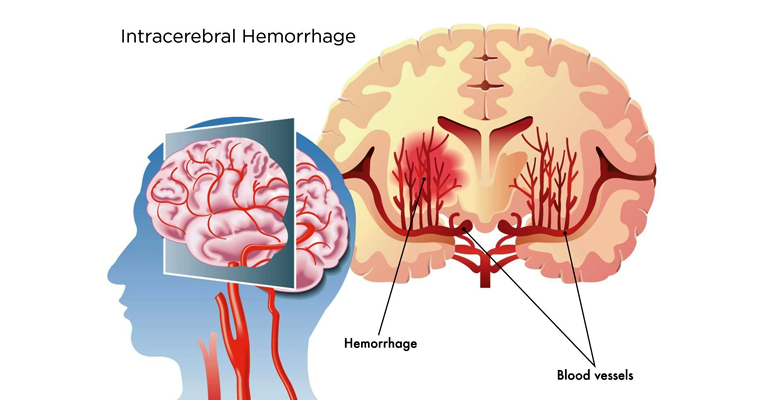

Intracranial hemorrhage (ICH) refers to bleeding within the skull, specifically within the brain or the spaces surrounding the brain. It is a medical emergency that requires prompt evaluation and intervention. There are different types of intracranial hemorrhages, each with its own characteristics and potential causes. Here are the main types:
Epidural Hematoma:
An epidural hematoma occurs when blood accumulates between the skull and the outermost layer of the brain's protective covering (dura mater). It is often caused by a head injury, such as a skull fracture, which damages an artery, leading to rapid bleeding.
Subdural Hematoma:
Subdural hematomas involve bleeding between the dura mater and the arachnoid membrane, which is the middle layer of the protective coverings of the brain. They can result from trauma or, in some cases, occur spontaneously due to underlying medical conditions.
Intracerebral Hemorrhage:
Intracerebral hemorrhage refers to bleeding within the brain tissue itself. It is often associated with conditions such as hypertension, arteriovenous malformations, or aneurysms. Trauma or certain medications may also contribute to intracerebral hemorrhages.
Subarachnoid Hemorrhage:
Subarachnoid hemorrhage involves bleeding into the space between the arachnoid membrane and the pia mater, which are layers surrounding the brain. This type is often caused by the rupture of an aneurysm or an arteriovenous malformation.
Severe headache:
A sudden and severe headache is a common symptom, especially in subarachnoid hemorrhage.
Neurological deficits:
Symptoms may include weakness, numbness, or paralysis on one side of the body, difficulty speaking, or changes in vision.
Nausea and vomiting:
These symptoms may occur, particularly in cases of increased intracranial pressure.
Altered consciousness:
Depending on the extent and location of the hemorrhage, the person may experience confusion, lethargy, or loss of consciousness.
Seizures:
Seizures can occur as a result of the irritation caused by blood in the brain.
Imaging studies:
CT scans and MRI are commonly used to diagnose intracranial hemorrhages and determine their location and extent.
Medical stabilization:
Initial treatment involves stabilizing the patient's vital signs and addressing any immediate life-threatening issues.
Surgery:
In some cases, surgical intervention may be necessary to remove the accumulated blood and relieve pressure on the brain.
Monitoring and supportive care:
Patients with intracranial hemorrhages often require close monitoring in an intensive care unit, along with supportive care to manage symptoms and prevent complications.
The prognosis for intracranial hemorrhage varies depending on factors such as the type, location, and size of the hemorrhage, as well as the promptness of medical intervention. Timely diagnosis and appropriate treatment are crucial to improve outcomes and minimize long-term complications.